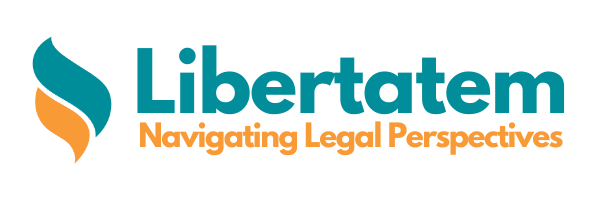Facts
Kudremukh national park situated in the western ghats is one of the internationally recognized biodiversity hot spots for biodiversity conservation. Kudremukh Iron Ore Co. Ltd. was involved in mining activities in the Kudremukh national park. On 14.2.2000 the court passed an injunction against the operation of any order permitting the removal of certain trees from National Parks, Games Sanctuaries, and Forests but the mining activities that were being conducted by Kudremukh Iron Ore Co. Ltd (KIOCL). were in clear violation of the abovementioned orders. Subsequently, this area was declared as National Park in terms of Section 35(1) of the Wildlife (Protection) Act. Subsequently matter was referred to the Central Empowered Committee who recommended that the company should wind up its operations within a period of five years or on the exhaustion of the oxidized weathered secondary ore, whichever is earlier, in the already broken up area subject to several conditions.
Issues
Whether the land involved in the mining operation outside the purview of the Wildlife Protection Act and the Environment Protection Act?
Whether the time of the lease to KIOCL should be extended?
Laws
Section 35, Wildlife (Protection) Act, 1972
Section 3, Environment (Protection) Act 1986
Rule 24 (B) of the Mineral Concession Rules Mines and Minerals (Regulation and Development) Act 1957
Article 47, Constitution of India
Article 48A, Constitution of India
Article 51-A(g), Constitution of India
Arguments:
Appellant
The mining activities conducted by KIOCL were in clear violation of the order passed by the court under which operation of any order permitting removal of certain trees from National Parks, Games Sanctuaries, and Forests was injuncted.
There was the destruction of forests in the Kudremukh National Park and the Bhadra river due to the mining activities of KIOCL,
The Karnataka State claimed that although originally it had accepted the proposal for the longer period of the lease, considering the various circumstances, its time limit of five years would be adequate, equitable, and fair.
Respondents
The land undermining was specifically removed from the purview of section 35(4) of the Wildlife Protection Act through a notification. This action effectively removes the application of the Wildlife Protection Act, Forest Conservation Act, and the Environment Protection Act.
They had an existing legal right to extend their lease on the land. The restrictions put on their lease would result in them not being able to perform many contracts which will have huge financial implications.
They had taken all possible steps to preserve and conserve nature around the mining area and the company was dedicated to the idea of sustainable development. The claims of the committee that there was continued destruction of flora and fauna due to the mining activities were contrary to reality.
Analysis and Conclusion
The court upheld the majority view of the Central Empowered Committee and ordered the company to comply with the recommendations made by the Committee.
From ancient times India has always placed the environment in a place of importance. This can be seen in the Vedas, orders of ancient kings, and ancient scriptures. The British exploited our natural resources for their own benefits which caused massive degradation of our natural
resources. When India gained independence, the economy was in a bad shape, poverty was remarkably high. It was necessary to focus on economic development over environmental concerns, so industrialization grew rapidly through the years. But now it is necessary for us to not compromise the environment for economic development and wealth maximization.
The court, in this case, analyses, whether they should take the eco-friendly approach or the dollar-friendly approach and, concludes that the opportunity cost of allowing the mining to continue beyond five years is too high. Opportunity cost is the evaluation placed on the most highly valued of the rejected alternatives or opportunities. It is that value that is given up or sacrificed in order to secure the higher value that the selection of the chosen object embodies.
Environmental preservation is of higher value as it is essential for human survival and the survival of other species. There are alternate avenues for economic development but the biodiversity of Kudremukh national park cannot be replaced. This is also in consonance with the principle of sustainable development. With this decision, we can see that there is a shift towards a new social goal of environmental conservation to guide economic policies and legal decisions. This shift is consistent with the idea of Buddhist economy2, in Buddhist economy, the society’s goal is to obtain maximum well-being with minimal consumption. Although the consumption of Kudremukh mines had the potential to give more economic benefits as the company stated in their submissions, they had orders that could take up till the year 2007 to complete and bring in foreign exchange, the court agreed with the recommendation of the committee that KIOCL should wind up within five years due to the damage that had occurred to the environment.
One of the goals of wealth maximization is Pareto efficiency. Pareto efficiency is where a person is made better off without making anyone else worse off. In most cases, the courts try to reach a Pareto efficient decision. But in cases of environmental degradation, it is impossible to arrive at a Pareto efficient decision, in such cases, the court offers a Pareto optimal solution. In a Pareto optimal solution is where any change in the allocation of resources will result in at least one person is worse off. In this case, the mining company is forced to wind up their operations within five years which makes them worse off but if the company is granted the lease of 20 years which they claim to have a legal right over there would have been irreparable damage to the environment of Kudremukh National Park. The court has emphasized the goal of sustainable development where economic development should not at the cost of environment and natural resources and the ability of the future to meet its own needs and requirements have to be kept in view.

